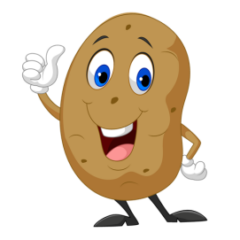Let’s say you have a bottle Corn Whiskey, Wheat Whiskey, Rye Whiskey and Malt Whiskey and you blend those together with the Corn Whiskey being 51% of the total blend. What have you just made? What if you are a licensed DSP and replaced bottles with barrels?
I hope my readers would know this product would be “Whiskey”. If all the above were Straight, then it could even be “Straight Whiskey”. What it is not and could never be is Bourbon Whiskey. Bourbon must be made from a grain mixture that is at least 51% corn with other grains that can be added for the remaining balance. This must be done at the time of mashing/fermenting/distilling. It’s silly to think otherwise.
Yet that is exactly what a craft distillery in Florida did in creating the first Florida ‘Bourbon’. Timber Creek Distillery separately distilled and aged these types of whiskies then blended them together to create their ‘Bourbon’. They have a kit of these separate whiskies and encourage you to create your own ‘bourbon’ at home. They even trademarked this process at ‘Pureblend’.
From their website:
“Individual grain spirits are barreled individually after distillation. Timber Creek individually barrels and ages each of their 100% whiskeys. Corn, Rye, Barley, Wheat and Oat corn whiskey’s are first given time to age before the distilling team selects the individual barrels. In order to blend bourbon whiskeys, specific barrels are hand selected since they have multiple grains. The hand selected barrels allow the individual flavors to blend to creating Timber Creeks Bourbon Blends.”
As many distilleries do, Timber Creek hired a PR firm to send out samples to whiskey review sites. Note, my policy is this blog never accepts samples and if I ever do a whiskey review here, it will be of a bottle that was purchased at retail. If you run a whiskey review site, you should know the definition of bourbon and at least question this process. That did not happen. The following ran articles on Timber Creek ‘Bourbon’.
Whiskey Wash – https://thewhiskeywash.com/reviews/whiskey-review-round-timber-creek-florida-bourbons
Bourbon Guy – http://www.bourbonguy.com/blog/2017/5/18/3-whiskeys-from-timber-creek-distillery3-whiskeys-from-timber-creek-distillery
-The Bourbon Guy updated his blog with some 2nd grade name calling but then states “…. blog is correct. I did make a mistake when I wrote this post. Though I know better, I didn’t call BS on the process that the distiller is using explicitly enough.”
Southern Living – https://www.southernliving.com/travel/travel/timber-creek-whiskey-distillery
Bourbon Sippers – http://bourbonsippers.com/timber-creek-distillery/
The Whiskey Reviewer – http://whiskeyreviewer.com/2017/01/timber-creek-florida-bourbon-review-011017/
Taste the Dram – https://www.tastethedram.com/single-post/2017/02/03/in-depth-whiskey-making-guide-by-camden-ford-of-the-timber-creek-distillery/
Timber Creek even managed to ‘win’ a few gold medals for their ‘bourbon’. Of note, on their website they have now updated their product name and now properly call this Florida Whiskey. Timber Creek is a 100% grain to glass distillery, so they earn my respect for that. I’ve reached out via email to the owner Camden Ford for comment about the change. He responded very quickly with a detailed response. He felt no category in the TTB definitions accurately described their process. He stated “I have come to the conclusion that the goal of the descriptions were to attempt to describe common characteristics of each product and give them distinctive names that will let consumers understand that what they are tasting has a common set of flavor characteristics across brands and manufacturers in the same category. With this view, I believe that what we make is, in fact Bourbon, in taste, profile, and chemical make up and follows the intent of the law.”
My reply was when you start trying to infer the intent of the law, you are going to have a 100 companies with 100 different interpretations and most of these are going to be wrong.
Please read the comments. Camden has made several comments and received some good responses.
